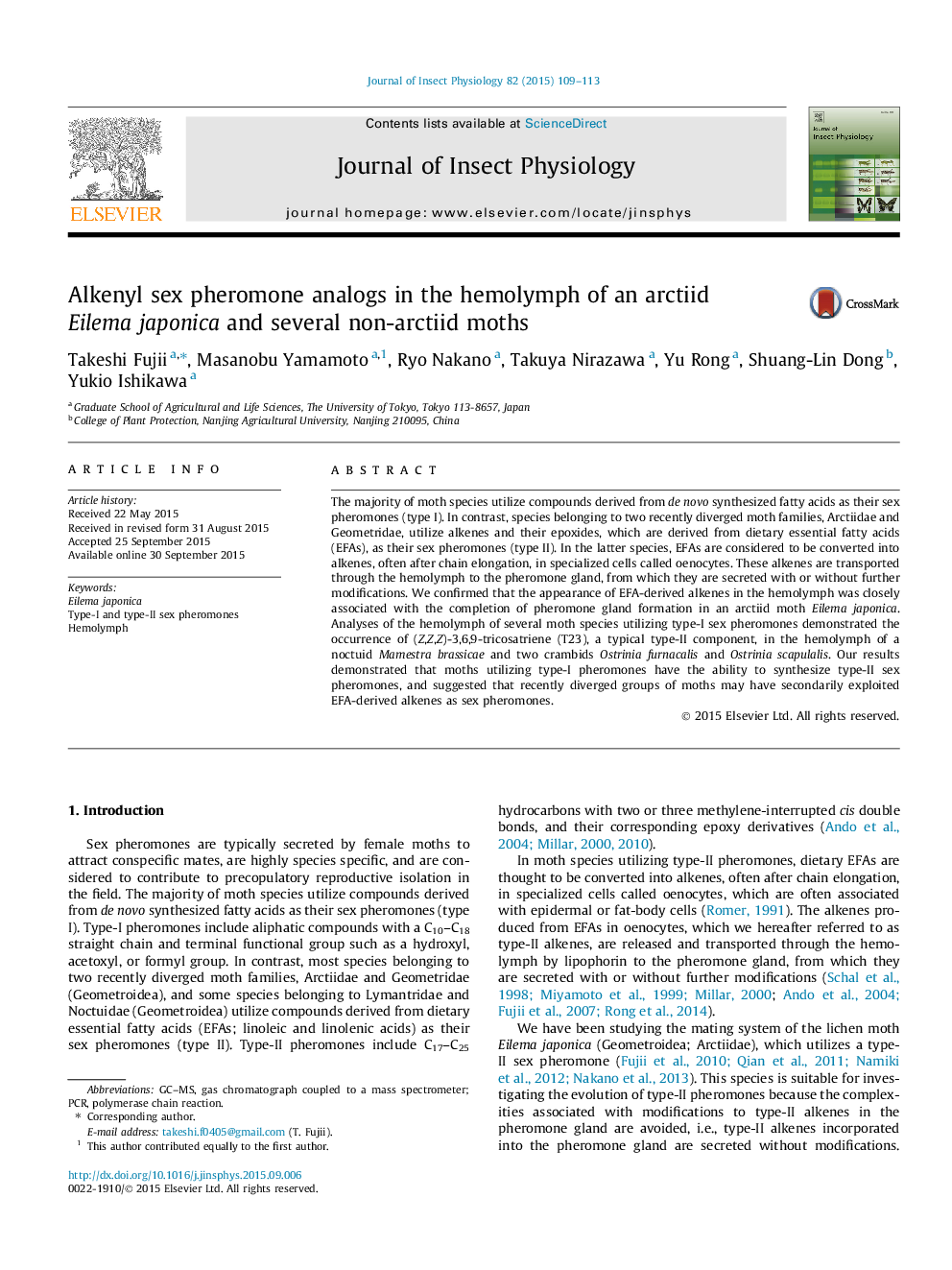| Article ID | Journal | Published Year | Pages | File Type |
|---|---|---|---|---|
| 5921486 | Journal of Insect Physiology | 2015 | 5 Pages |
â¢Type-I sex pheromones in moths are derived from de novo synthesized fatty acids.â¢In contrast, type-II pheromones are derived from dietary essential fatty acids (EFAs).â¢EFA-derived alkenes were detected in the hemolymph of moths using type-II pheromones.â¢These alkenes were also detected in the hemolymph of moths using type-I pheromones.â¢EFA-derived alkenes may have become secondarily utilized as sex pheromone components.
The majority of moth species utilize compounds derived from de novo synthesized fatty acids as their sex pheromones (type I). In contrast, species belonging to two recently diverged moth families, Arctiidae and Geometridae, utilize alkenes and their epoxides, which are derived from dietary essential fatty acids (EFAs), as their sex pheromones (type II). In the latter species, EFAs are considered to be converted into alkenes, often after chain elongation, in specialized cells called oenocytes. These alkenes are transported through the hemolymph to the pheromone gland, from which they are secreted with or without further modifications. We confirmed that the appearance of EFA-derived alkenes in the hemolymph was closely associated with the completion of pheromone gland formation in an arctiid moth Eilema japonica. Analyses of the hemolymph of several moth species utilizing type-I sex pheromones demonstrated the occurrence of (Z,Z,Z)-3,6,9-tricosatriene (T23), a typical type-II component, in the hemolymph of a noctuid Mamestra brassicae and two crambids Ostrinia furnacalis and Ostrinia scapulalis. Our results demonstrated that moths utilizing type-I pheromones have the ability to synthesize type-II sex pheromones, and suggested that recently diverged groups of moths may have secondarily exploited EFA-derived alkenes as sex pheromones.
Graphical abstractDownload full-size image
